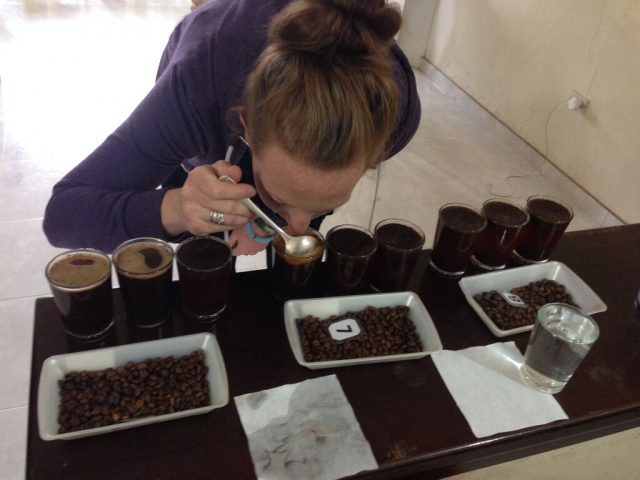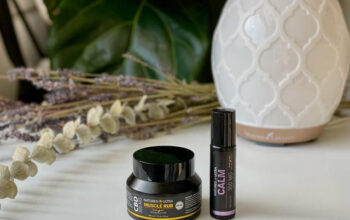There are several aspects that affect the flavor of coffee beans. Ultimately the subtleties we coffee nerds (also known as coffee professionals) seek to begin with the soil the trees are grown in. There are other aspects that come into play such as environment, dirt, rain, sun, harvesting, handling, storage and toasting that all contribute to why coffee tastes the method it does. And we are not speaking about flavors like vanilla-hazelnut or chocolate lotion pie surprise; those types of ‘flavors’ are ingredients added after toasting (in fact the beans are soaked in a taste concentrate and take in the taste … ewww!) Nothing natural concerning that! Nonetheless in this conversation, we will focus on the coffee origin that starts with climate and region. Besides, that is where everything begins.
There are numerous countries that produce Arabica coffee beans. Clearly, they can not be grown in every nation or they would be. Coffee beans require to have the right environment as well as elevation in order to survive. Each country has to be located in a geographical area with the ability to sustain a coffee tree. The optimal environment needs to fall into one of two groups: subtropical or equatorial.
The subtropical region boasts an elevation of 1800-3600 ft. This would consist of parts of Brazil like the Sao Paulo state as well as Zimbabwe in Africa as well as Mexico. The climate problems permit one expanding period as well as one growing season because of the equivalent rainy as well as dry seasons.
The equatorial areas with an altitude of 3600-6300 ft would certainly be those discovered in say Ethiopia, Kenya, and Colombia. These regions haven’t any completely dry period so all drying out of processed coffee beans needs to be done by mechanical methods, not by mother earth. She is not so trustworthy when you need 4 wks to dry coffee outside on a patio and the rain is not letting up. The advantage is that frequent rains allow for 2 harvesting periods.

When you actually break down the beginning by continent, you would have a listing as follows:
The United States and Canada as well as the Caribbean – Hawaii is known mostly for Kona coffee which gets its much-demanded qualities from the abundant volcanic dirt. The Mexican states of Veracruz, Oaxaca, and also Chiapas flaunt a cup of coffee with a terrific scent and a deepness of flavor, frequently with a pronounced sharpness. Puerto Rican coffee is known for its well-balanced body, acidity, and also fruity aroma.
Central America – Guatemalan coffee beans are medium-to-full-bodied coffees that normally have a deepness and complexity of taste that is nearly zesty, nutty, or chocolaty. Costa Rica is known for coffee that is a perfect balance and also completely bodied. Panama coffees are anywhere from intensely acidy to gently as well as vibrantly flower.
South America – Colombian coffees are generally mild, with a well-balanced level of acidity and also total sweetness while Brazil, still pleasant to taste tends to offer a more low-acid, moderate-bodied coffee.
Africa, as well as the Middle East – Ethiopia, has three primary expanding regions for coffee beans which are Sidamo, Harer, and also Kaffa. When tasted, Ethiopian coffee tends to be completely flavorful, a tad ‘natural’, taste of berries, winey in character, and also full-bodied. Kenya coffee is sharp with a fruity level of acidity. Kenyan also offers a complete body as well as rich fragrance.
Arabia – Yemen is a deep as well as rich flavorful coffee. Enjoyable reality – Mocha Java was an unexpected mix of Arabian coffee and also beans from the island of Java.
Asia – Indonesia is understood for the islands of Sumatra, Java, and also Sulawesi (Celebes) that generate a rich, full body and also mildly acidic coffee. Vietnam creates mainly Robusta coffee. Vietnamese coffee has a light level of acidity as well as a moderate body with an excellent balance. It is usually used for blending, particularly in espresso blends.
When we roasters mix coffee beans to find up with something initial, we normally begin with a taste profile that we intend to complete and function in reverse. That is why having a working knowledge of all sorts of coffees is a great requirement for mixing and trying different roasts and blends. Certainly, you will have your ‘purists’ that claim a Guatemalan Estate coffee cup at a rating of 90, why not let it depend on its own? They do not agree with mixing and also state it’s a method to hide issues in the mug. Well real it does that, nonetheless, I do not believe that any individual would intentionally do that. This profession has so much passion that I believe anybody in it is in it 100%. By that, I really feel that we are all pursuing our outright finest so we head out of our way to ensure the product fulfills or surpasses every expectation. I think that blending provides particular creative thinking to a roaster that would only be readily available in a particular roasting account.
Having stated that I take place to prefer the single beginning coffees greater than the blends. It’s a quest each season to obtain as lots of bags of the very best estate as well as single farm eco-friendly coffee beans that we can. It is as a lot a goal to have a one-of-a-kind and searched-for solitary origin as it is to have a unique and demanded original (and secret!) blend.
So, the following time you buy a bag of whole bean coffee or take a sip of the black mixture, attempt to select the apparent flavor characteristics we talked about right here. You’ll be stunned at how much coffee nerd stuff you might just know currently!





